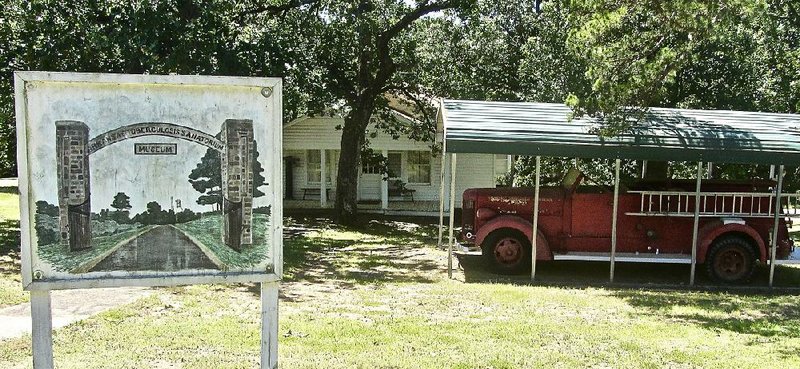BOONEVILLE -- Tuberculosis is a rarity in Arkansas these days, with 100 or fewer cases reported each year. But the deadly lung disease was a fearsome scourge here and around the world in 1910, when the Arkansas Tuberculosis Sanatorium opened in the hilly countryside of Logan County.
In an isolated setting 120 miles west of Little Rock, the sanatorium became globally renowned between the two world wars. It was the largest such U.S. treatment center and one of the most modern anywhere, providing research help to clinics as far away as Europe and Asia.
There was a good-news reason for the facility's closing in 1973. The development of effective drug treatments during and after World War II had sharply reduced the extent of tuberculosis in the United States, although TB remains a major health challenge in some less developed nations.
Now the 900-acre site is Arkansas' largest historic district. Its buildings function today as Booneville Human Development Center, a unit of the state's Department of Human Services. But one building has been set aside as the Arkansas Tuberculosis Sanatorium Museum, opened in 2010. Its exhibits vividly convey the pervasive menace once posed by the infectious disease.
A brochure available at the museum, organized by the Booneville Historic Preservation Society, makes clear how difficult it was to treat tuberculosis before the advent of antibiotics:
"Over 70,000 people passed through the gates of the Arkansas Tuberculosis Sanatorium during its 63 years of operation. Some came willingly seeking treatment and hoping for a cure. Others were sent to the sanatorium, quarantined and in handcuffs if necessary."
In the early decades of the 20th century, "fresh air, confinement and good food were the only courses of treatment." Then, "advances in treatment, some of which were due to the efforts of those at the sanatorium, changed the disease from the feared White Plague to a mere memory in the United States."
Created in the Jim Crow era, the sanatorium served white patients only. A facility at Alexander in Saline County was maintained for black TB patients. The ethos of the time is echoed in a small classified ad posted at the museum with this headline: "Help wanted. White only."
The museum's half-dozen rooms focus on the patients who passed through the sanatorium along with the medical personnel and other staff. Time can be spent leafing through fascinating photo albums, transcripts of patient interviews and the monthly newsletter. One room is set up as a typical patient's bedroom.
Although the sanatorium saved many patients and improved the lives of numerous others, the museum is forthright in relating some of the more rigorous aspects of treatment.
A sign posted near an operating table points out that "artificial pneumothorax, the intentional collapse of the lung to allow rest, was used extensively in the 1920s. ... Thoracoplasty was the most grisly of the operations and involved removing part of the chest wall and the collapse of the underlying lung. This method would remain in use into the early 1960s."
Vintage postcards convey the extent of the property, which can also be grasped on a self-guided driving tour that another brochure maps out. The most prominent structure is the Nyberg Building, completed in Art Deco style in 1938. Five stories tall, the hospital could house 523 patients in its 140,000 square feet -- a reflection of tuberculosis' scope, even in the lifetime of today's older Arkansans.
The Arkansas Tuberculosis Sanatorium Museum is open 9 a.m.-3 p.m. Monday-Friday. Visitors can do a self-guided tour after picking up the museum key at the Booneville Human Development Center's Resources Center on the property. Admission is free; donations are welcome.
To reach the site from Booneville, drive south about 2 miles on Arkansas 23 before turning east on Arkansas 116. For more information, call (479) 675-5009.
Weekend on 06/01/2017
